The Winemaker’s Think Tank: Vol 13- What’s the best way to add sulfite to my wine?
What’s the Winemaker’s Think Tank?
Every Thursday we will post about a few frequently asked questions that our winemaker has answered. If you have a winemaking question you would like to have answered, please email us at support@juicegrape.com and we will try to get into next week’s post. Cheers! 🙂
What’s the best way to add sulfite to my wine?
There are two effective methods of sulfite addition to wine. Campden tablets are small tablets of sulfite that are a pre-measured dose meant to add 25ppm to 5 gallons of wine. The drawback to these tablets is that sometimes they do not dissolve completely. The most effective way to add sulfites into wine is via powdered potassium metabisulfite. Winemaker Magazine offers a sulfite calculator on their website that is very useful in helping a winemaker figure out an exact dosage of sulfites for their wine. To use this calculator, one must know the volume and pH of the wine to be treated. The average rate of application for potassium metabisulfite is ¼ tsp/5 gallons to raise the sulfites by 50ppm. The sulfite calculator is a better option as it will help you find and exact dosage needed for your wine contingent upon the wines’ pH and stability.
We hope this information helps with your winemaking. If you have any follow up questions or winemaking questions in general, please email us at support@juicegrape.com.
The Winemaker’s Think Tank: Vol 12- Common Winemaking Faults and Flaws
What’s the Winemaker’s Think Tank?
Every Thursday we will post about a few frequently asked questions that our winemaker has answered. If you have a winemaking question you would like to have answered, please email us at support@juicegrape.com and we will try to get into next week’s post. Cheers! 🙂
In this week’s Winemaker’s Think Tank we outline the difference between flaws, faults, and how to identify them.
- Flaws
- Flaws are a mistake made in the winemaking process that leads to a property in the wine that is not characteristic of the varietal
- Stylistic Choice vs. Flaw
- Imbalance Flaw
- Acid vs Sugar, Oak Levels, Alcohol Level
- Visual Flaws
- Haze, Sediment, Effervescence, TA Crystals, Floaters, Lack of Color Saturation
- Aroma/Bouquet Flaws
- Lack of Aroma, Non-varietal aroma, Over-oaking
- Faults
- Faults are often a microbial or chemical reaction within the wine in some part of its life that significantly alters a wine, eventually leading to the point of spoilage.
- Oxidation Faults
- Acetaldehyde – oxidation of Ethyl Alcohol smells like sherry, or old apples, browning
- Causes: headspace, low sulfites, poor corks, bacterial contamination
- Acetic Acid – Vinegar
- Causes: Acetaldehyde, Acetobacter bacteria react with ethanol, Fruit Flie
- Ethyl Acetate – Nail Polish Smell
- Oxidation of Acetaldehyde and Acetic Acid
- Causes: headspace and bacterial contamination
- Acetaldehyde – oxidation of Ethyl Alcohol smells like sherry, or old apples, browning
- Sulfur Faults
- Hydrogen Sulfide – Rotten Eggs Smell
Causes: lack of yeast nutrients, yeast stress, sulfur sprays, yeast bi-product, high temps - Sulfur Dioxide – Burnt Match Smell
Causes: over sulfating, wild yeast - Complex Sulfur Faults- Mercaptans, DMS, DES, DMDS, DEDS
Causes: Hydrogen Sulfide reacting with Ethyl Alcohol
- Hydrogen Sulfide – Rotten Eggs Smell
- Microbial Faults
- Brettanomyces – Barnyard, Horse Saddle, Antiseptic Ointment, Band-Aids, Bacon, Clove
- Causes: spoilage yeast cells that are incredibly dangerous and difficult to eliminate. Most often found in contaminated barrels, winery cleanliness, resistant to acid and SO2
- Geranium Taint – Fresh cut geranium leaves
- Causes: Reaction of potassium sorbate with Lactic Acid Bacteria in the presence of Ethyl Alcohol
- Refermentation – Fizzy wine, popped corks
- Causes: Yeast or microbial fermentation of residual sugar
- Brettanomyces – Barnyard, Horse Saddle, Antiseptic Ointment, Band-Aids, Bacon, Clove
- Other Faults
- Cork Taint – Wet basement, wet old newspaper, mildew
- Causes: strain of trichloanisole on cork (cork taint); mold that contacts chlorine and wood
- Heat Damage – Cooked fruit smell, brick red color, similar to oxidation
- Causes: leaving wine in a hot car, in the sun, etc.
- Cork Taint – Wet basement, wet old newspaper, mildew
We hope this information helps with your winemaking. If you have any follow up questions or winemaking questions in general, please email us at support@juicegrape.com.
The Winemaker’s Think Tank: Vol 10 – Making Wine from Pinotage Grapes

What’s the Winemaker’s Think Tank?
Every Thursday we will post about a few frequently asked questions that our winemaker has answered. If you have a winemaking question you would like to have answered, please email us at support@juicegrape.com and we will try to get into next week’s post. Cheers! 🙂
We all know that feeling. You made it through the holidays, your wines are resting peacefully in your cellar, but there’s something missing. You’re getting that “itch.” You go down to your cellar and see that a few of your barrels are empty, and that French oak barrel shouldn’t be empty too long . . . so you start Googling and then you find that there is a spring wine season! Your prayers are answered! You can scratch that winemaking itch and get moving on your next vintage. Believe me, your French oak barrel will thank you.
Not all winemakers know this but Musto Wine Grape brings in wine grapes and juices from South America and South Africa in the springtime. Specifically Pinotage and Cabernet Sauvignon from South Africa, Malbec from Argentina, and Cabernet Franc, Cabernet Sauvignon, Carmenere, Merlot, Malbec, Petite Verdot, Pinot Grigio, Pinot Noir, Sauvignon Blanc, Syrah, and Viognier from Chile.
Making wine from these grapes and juices is very different than the California grapes and juices. The grapes have a much longer ride and the regions where the grapes are grown give off very different characteristics. Argentinean and Chilean grapes tend to have a lot of fruit-forward notes, dark berry flavors, with cigar and earthy undertones; as opposed to the South African grapes that have a brighter fruit profile such as cranberry and raspberry.
In the spring of 2016 we decided to make a Pinotage. Neither of us had ever made one before and we were excited to try out a new wine grape variety and region. Pinotage is a red wine grape that is South Africa’s signature variety. It was bred there in 1925 as a cross between Pinot Noir and Cinsault (also known as Hermitage) – thus the name Pinotage. It is the second most planted grape in South Africa.
As a winemaker it was very exciting to get a chance to make wine from South Africa. It was also exciting to make a wine we have never made before. The grapes came in 20 lb. (9 kg) cases and were simply immaculate. The berries were in very good condition with no mold or decay. The one thing we did notice about the grapes is the skins were different in texture. They chewed for a long time and can almost be described as leathery. We have never seen that on a California or South American grape before.
The initial numbers on the grapes were workable. The Brix came in at 25, which would result in an alcohol of 13.75%. There was no adjustment needed on the sugar level. The pH and titratable acidity (TA) came in at 3.91 and 6.2gm/L respectfully. Tartaric acid was added to get the pH to a desired level. One thing we have learned is every grape is different – they cannot be handled by mathematical formulas only. Always bench test your adjustments; the results are not always linear. Our goal is to get the pH AND the TA to the ideal levels. This is not always possible, but an experienced winemaker will have to make the best decisions.
After adding tartaric acid, we ended up with a pH of 3.5, which is an ideal number. The TA only rose to 7.5 gm/L. As we stated above these grapes did not show the linear relationship between the pH and TA – meaning it is not always true what the pH goes down, the TA goes up.
So these were good starting numbers to release the grapes for fermentation. Something Frank and I swear by is always making your adjustments before fermentation. Once fermentation starts it is a moving target. And once the wine has completed fermentation, you really should not be making major pH/TA adjustments. We went with D254 yeast, simply because it always does a good job and we have never made these grapes before. Next year we think we might try the BDX yeast.
We processed these grapes with the same protocol as a California vinifera. We cold soaked the grapes 3–4 days. Cold soaking not only gives you time to work on the wine before fermentation, but allows the wine to “bleed out” and stabilize. The skins break down and you get the tannins and color to stay with the must. While the grapes were in a cold soak we made the Brix, pH, and TA adjustments. We also added normal additives such as tannins, Opti-red, oak powder, etc.
The fermentation went well. A normal 3–4 punch downs a day is a good protocol. We checked the temperature every morning and evening. It ran from 70–80 °F (21–27 °C) the entire fermentation, a good temperature for reds.
The pressing went well. The skins were still like little pieces of leather – we will never forget that about Pinotage. The fresh pressed juice had a cotton candy nose to it, which we found unusual but pleasing. It has faded off to a bright red berry nose as time has gone on.
Once the wine was racked 2–3 times, it was moved to a Hungarian barrel for 8 months. It is now back in the tank for final adjustments before bottling. The final numbers are all good. The pH is 3.52, the TA is 0.62 and the alcohol level is 14%.
Tasting Notes:
The nose has red berries such as raspberry and cranberry. It is a clean nose with a “fruity” character.
The palate had red licorice and tobacco, and reminds me of a Pinot Noir. The tannin level is medium, which we find perfect for this wine. Big tannins would have overtaken this particular lot of Pinotage. It is an easy drinking wine. It has a sweet fruity presence, yet there is no residual sugar. This will make a good red for the summer for those red drinkers who refuse to go to whites at that time.
So there it is. We made our first South African wine from grapes. It was exciting and a learning experience for both of us. Each season we will try to process them differently to create other sides of this wonderful wine — Pinotage!
You have many winemaking options during the spring winemaking season. Don’t let a unique winemaking opportunity pass you by! If you have any questions about the spring wine season feel free to email me at cmusto@juicegrape.com.
Article by Christina Musto & Frank Renaldi for Winemaker Magazine. You can see the entire article by clicking HERE.
We hope this information helps with your winemaking. If you have any follow up questions or winemaking questions in general, please email us at support@juicegrape.com.
The Winemaker’s Think Tank: Vol 9 – How long will my wine last?
What’s the Winemaker’s Think Tank?
Every Thursday we will post about a few frequently asked questions that our winemaker has answered. If you have a winemaking question you would like to have answered, please email us at support@juicegrape.com and we will try to get into next week’s post. Cheers! 🙂
How long will my wine last?
All wine ages differently. Certain varietals benefit from aging, others are meant to be consumed quickly. Generally, the more tannic the wine, more it will benefit from aging. Other factors influence a wine’s potential to age as well. If the winemaker chooses not to add sulfites to the wine (not recommended), the wine will not age as well and should be consumed within a year. If the proper level of sulfites are added, the wine stored at an appropriate temperature (55-62 degrees Farenheit), and not exposed to light, it should be able to age for many years. Some varietals that benefit from aging are Chardonnay, Cabernet Sauvignon, and Malbec. Some varietals that do not necessarily benefit from aging are Gewurztraminer, Sauvignon Blanc, and Cayuga.
We hope this information helps with your winemaking. If you have any follow up questions or winemaking questions in general, please email us at support@juicegrape.com.
The Winemaker’s Think Tank: Vol 8 – Grape Yield
What’s the Winemaker’s Think Tank?
Every Thursday we will post about a few frequently asked questions that our winemaker has answered. If you have a winemaking question you would like to have answered, please email us at support@juicegrape.com and we will try to get into next week’s post. Cheers! 🙂
When should I bottle?
The answer to this question can have many directions. The simple answer is: when the wine is ready. On average, white wines may be bottled 6-12 months after fermentation. Red wines benefit more from bulk aging, that is, aging all of that varietal together in a large vessel such as a tank or barrel or carboy, rather than in individual bottles. A red wine should bulk age for at least a year before bottling. Premium red wines age for at least 3 years in large vessels before bottling.
We hope this information helps with your winemaking. If you have any follow up questions or winemaking questions in general, please email us at support@juicegrape.com.
2017 Southern Hemisphere Harvest Update E-Book
Extra, extra! Read all about it! The Spring Harvest will be here soon! Catch up on what Musto Wine Grape Company has in store for your Spring vintage by clicking the link below.
The Winemaker’s Think Tank: Vol 6 – Do I Add Yeast to My Wine?
What’s the Winemaker’s Think Tank?
Every Thursday we will post about a few frequently asked questions that our winemaker has answered. If you have a winemaking question you would like to have answered, please email us at support@juicegrape.com and we will try to get into next week’s post. Cheers! 🙂
Do I Add Yeast to My Wine?
Some winemakers prefer what is called a “natural method” of fermentation, by allowing the yeast that live on the grape skins to ferment the must into wine. While these yeast can start the process of fermentation, they generally have too low of a population and alcohol tolerance to successfully finish the fermentation process. The most successful fermentations are conducted with lab cultured yeast cells. This is not to say that this method isn’t natural as well. Scientists travel to famous wine growing regions to obtain samples of the natural yeast flora that exist in those environments. They take these samples back to the lab and culture them, breeding select and healthy populations that can be packed and sold to winemakers all over the world. These selected yeast strains have a higher alcohol tolerance and have had the benefit of many trials and research conducted on their behalf to see exactly how they affect a wine. By using these strains you will not only have a more successful fermentation, but also more predictable results rather than the unpredictable results of the wild flora “natural yeast” that live on the skins. Through their research, scientists have found that certain yeasts promote certain attributes of the wine such as color security, fruit characters, spice flavors, and acid reduction. A vintner may select one of these commercially bred strains to get the desired effect they would like in their end product.
We hope this information helps with your winemaking. If you have any follow up questions or winemaking questions in general, please email us at support@juicegrape.com.
Argentina Has Officially Been Added to Our Spring Grape Program
Argentina Has Officially Been Added to Our Spring Grape Program!
Location: Mendoza, Argentina – specifically the Perdriel area in Lujan de Cayo county
Grapes Being Sourced: Malbec, their Malbec makes up 46% of their farmed vineyards.
Grower Information: The first Cantinian vineyard was planted in 1923. As of 2012, the wine grapes grown in the Cantinian vineyards were certified organic by Argencert (in conjunction with the USDA Organic Certification) and accredited by Global Program IFOAM. The vineyards are situation on elevated terrain with views of the Andes Mountains.
Geeky Facts: Their 2009 Malbec received 90 points in the Wine Advocate and a Silver Medal in the San Francisco International Wine Festival
2017 Chilean Wine Harvest Update
2017 Chilean Harvest:
2017 was a fantastic growing season up until the other day. As many of you might have heard on the news massive fires broke out in Chile. The fires have been a devastating blow to the Chilean people. However, The Curico Valley and the Southern regions of Colchagua Valleys were thankfully not affected. Unfortunately other Chilean wine growing regions such as the Maipo Valley were greatly affected by the fires and might not be able to produce vintages this year. We encourage everyone to donate to the Red Cross to aid in the relief of these fires.
The growing season for the Curico and Colchagua Valley’s was a hot and dry one. Expect wines with great character, intense flavors, complexity, and distinction. We should be receiving grapes around the same time as last year, maybe a little earlier for the whites. The first white grapes will be picked at the end of February. Carmenere will be in shorter supply this year as the demand has gone up for this grape, so put your orders in early!
The wines of Chile – along with the winemakers and vineyards that produce them – have had some profound transformations in the past 30 years. Grape growers have successfully determined which varietals thrive in their vineyards, have experimented with unique trellising systems, and explored interesting new areas for planting. The wines now have a head start because of the wonderful grape quality.
Musto Wine Grape Company, LLC. has been importing quality Chilean wine grapes for over 10 years. We have developed long lasting relationships in Chile and are constantly growing and developing the program. The vineyards are located between the Andes Mountains and Pacific Ocean. Therefore, the vines have excellent growing conditions for perfect ripeness and complexity thanks to the ocean breeze and Mediterranean climate.
The Curico Valley has been a wine grape growing region since the 1800’s and is located about 115 miles south of Santiago in the Central Zone of Chile. It is known as the “Heart of the Chilean wine industry”. Curico has the perfect fertile soil and is best known for its micro climates and the ability to grow over 30 different wine grape varieties. Situated along the Guaiquillo River and nestled between mountains on its east and west sides, Curico’s Mediterranean climate and unique topographical features helps to create some of the finest wine grapes in South America.
The climate in the valley is characterized by morning fog and wide day-night temperature fluctuations. Climatic conditions in some parts of the valley favor wines with higher acidity, such as white varieties including Chardonnay, Sauvignon Blanc, Vert and Gris. High quality Cabernet Sauvignon, Syrah, Merlot, and Carménère grapes are sourced from warmer areas of the valley, such as Lontué, particularly when produced from ancient vines.
Terroir: Sandy, clay, decomposed granite, volcanic-alluvial
Grape Varieties Available: Cabernet Sauvignon, Cabernet Franc, Carmenere, Malbec, Merlot, Petite Verdot, Pinot Noir, Syrah, Chardonnay, Pinot Gris, Sauvignon Blanc, Viognier
Juice Varieties Available: Cabernet Sauvignon, Cabernet Franc, Cabernet-Merlot Blend, Carmenere, Malbec, Merlot, Petite Verdot, Pinot Noir, Syrah, Chardonnay, Pinot Gris, Sauvignon Blanc, Viognier, Muscat







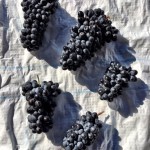
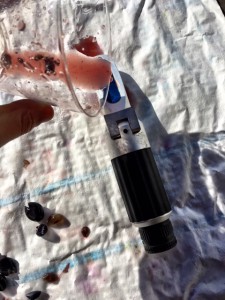
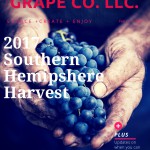
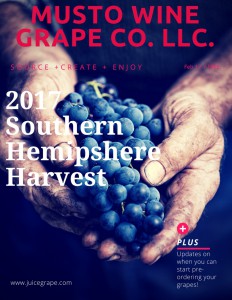
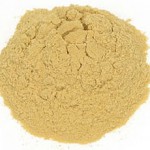
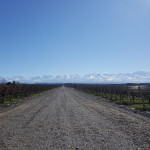
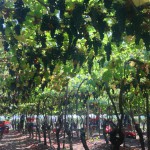
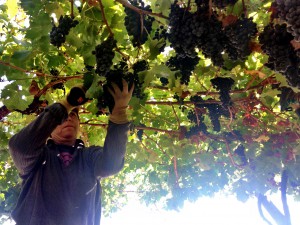
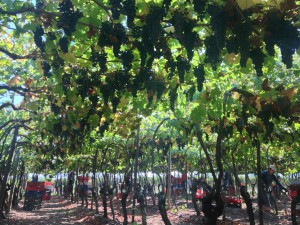
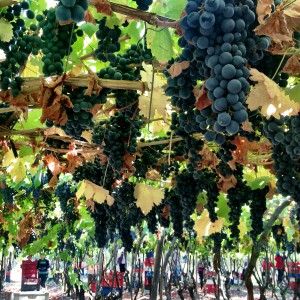
Recent Comments